Are caracal cats be pets? Exotic feline ownership presents complex challenges. At PETS.EDU.VN, we explore the captivating yet critical aspects of keeping caracals, offering insights into their unique needs and the potential pitfalls of domesticating these wild creatures, ensuring you’re well-informed. Learn more about hybrid cat breeds and wild cat behaviors.
1. Understanding the Caracal: A Wild Cat’s Profile
The caracal (Caracal caracal), often dubbed the “desert lynx,” is a wild cat species native to Africa, the Middle East, Central Asia, and India. Despite the nickname, it is not a true lynx but a distinct species within the Felidae family. These cats are characterized by their robust build, long legs, short reddish-brown coats, and distinctive long, tufted black ears. The striking ear tufts give them an alert and inquisitive appearance, making them undeniably captivating.
-
Subspecies: Caracals have three recognized subspecies, each inhabiting a different region:
- Southern Caracal (C. c. caracal): Found in South and East Africa.
- Northern Caracal (C. c. nubicus): Inhabits North and West Africa.
- Asiatic Caracal (C. c. schmitzi): Lives in Central Asia and India.
-
Physical Attributes: Adult caracals typically weigh between 20 to 40 pounds, significantly larger than the average house cat. Their powerful build and agility make them formidable hunters in their natural habitat.
-
Natural Habitat: Caracals thrive in diverse environments, including woodlands, savannas, and scrublands. They are adaptable and can survive in both arid and semi-arid conditions.
2. Caracals vs. Domestic Cats: Exploring the Feline Family Tree
To understand why caracals are not suitable pets, it’s essential to explore their place within the cat family, Felidae, which is divided into two subfamilies: Pantherinae and Felinae.
2.1. The Pantherinae Subfamily
This group includes the “big cats” known for their ability to roar (except for the snow leopard). The Pantherinae subfamily contains seven wild cat species:
| Species | Scientific Name |
|---|---|
| Lion | Panthera leo |
| Tiger | Panthera tigris |
| Jaguar | Panthera onca |
| Leopard | Panthera pardus |
| Snow Leopard | Panthera uncia |
| Mainland Clouded Leopard | Neofelis nebulosa |
| Sunda Clouded Leopard | Neofelis diardi |

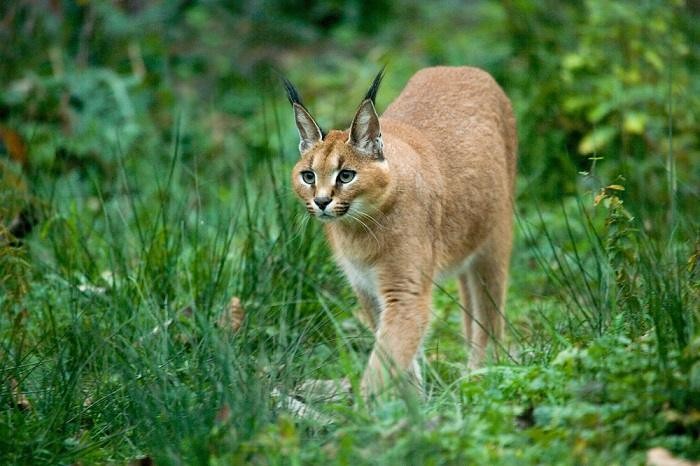
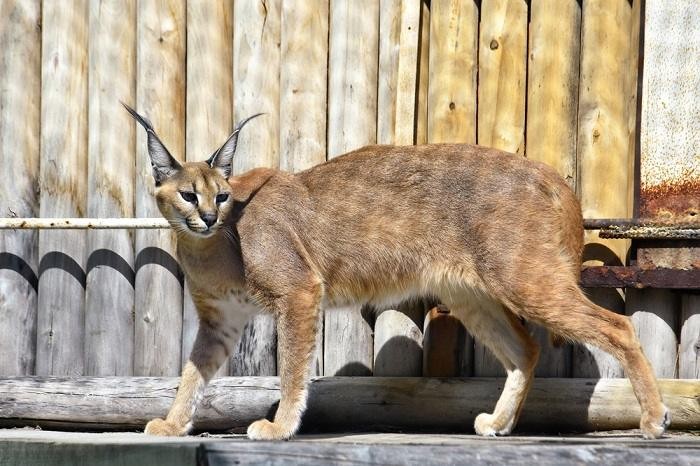
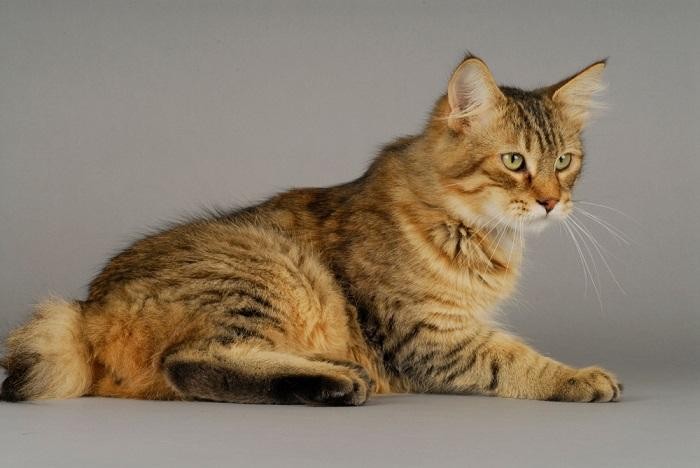
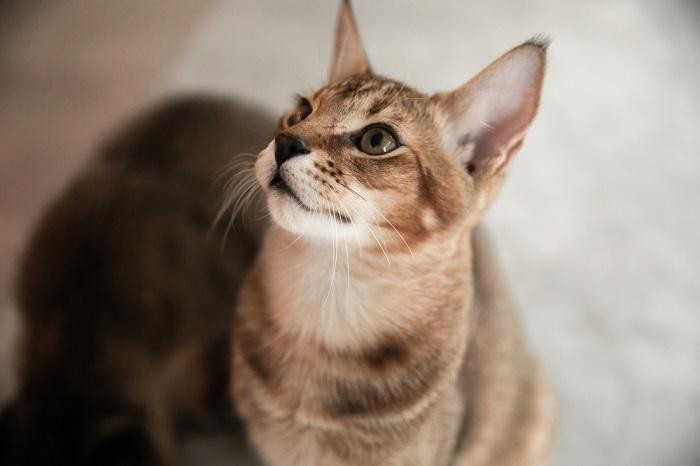
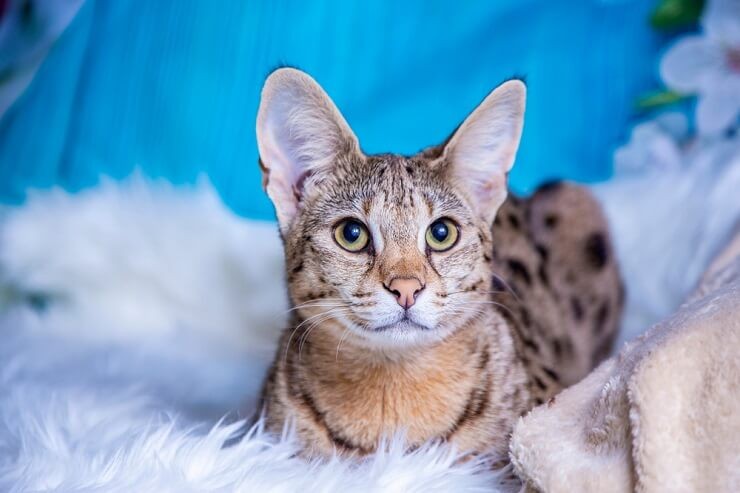
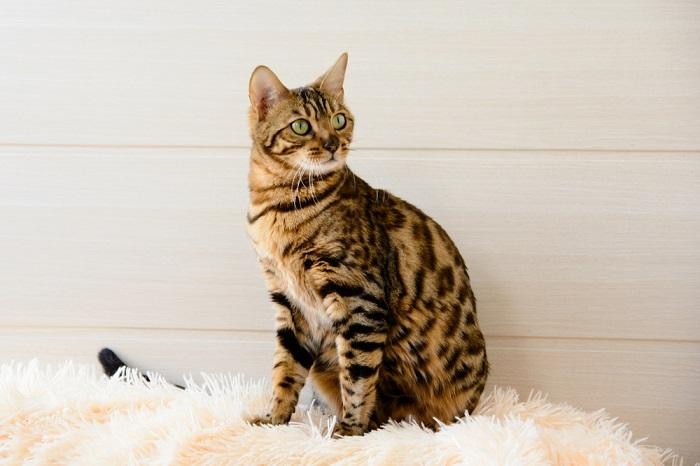
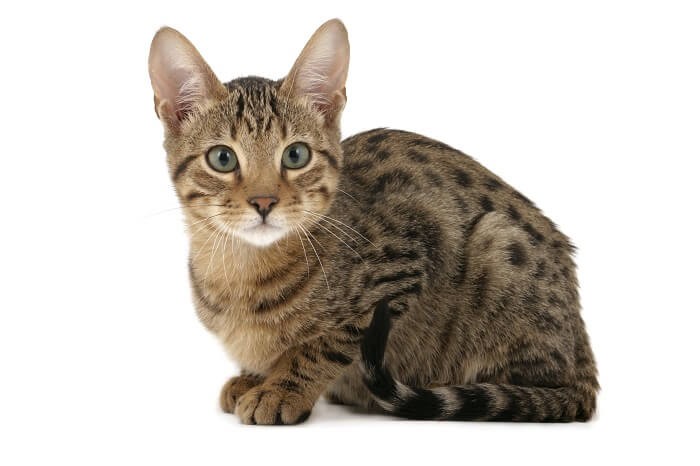

2.2. The Felinae Subfamily
The Felinae subfamily includes smaller wild cats and the domestic cat (Felis catus). Members of this subfamily can purr but cannot roar. Some common members include:
| Species | Scientific Name |
|---|---|
| African Wildcat | Felis lybica |
| Asian Golden Cat | Catopuma temminckii |
| Bobcat | Lynx rufus |
| Caracal | Caracal caracal |
| Cheetah | Acinonyx jubatus |
| Cougar/Mountain Lion | Puma concolor |
| Domestic Cat | Felis catus |
| Jungle Cat | Felis chaus |
| Leopard Cat | Prionailurus bengalensis |
| Ocelot | Leopardus pardalis |
| Serval | Leptailurus serval |
2.3. Genetic Differences
While caracals and domestic cats belong to the same subfamily, their genetic makeup differs significantly. Domestic cats have evolved over thousands of years to live alongside humans, developing traits suited for companionship. Caracals, on the other hand, retain their wild instincts and behaviors, making them unsuitable for domestic life.
3. Why Caracals Do Not Make Good Pets: A Realistic Perspective
The allure of owning an exotic animal like a caracal can be strong, but it’s crucial to understand the practical and ethical implications. Wildlife experts and animal welfare organizations strongly advise against keeping caracals as pets.
3.1. Wild Instincts and Unpredictability
Caracals, even when bred in captivity, retain their wild instincts. These instincts can manifest in unpredictable and potentially dangerous behaviors.
- Aggression: Caracals are powerful animals with sharp teeth and claws. Even a single instance of aggression can cause serious harm, especially to children, the elderly, or other pets. Reports of exotic cat attacks highlight the risks involved.
- Territorial Behavior: Caracals are highly territorial. They mark their territory by spraying urine, scratching, and defecating in the open, behaviors that are challenging to manage in a domestic setting.
3.2. Specialized Care Requirements
Providing proper care for a caracal is complex and expensive.
- Veterinary Care: Finding a veterinarian willing and able to treat a caracal can be difficult. These cats require specialized preventive care and may need treatment for injuries or illnesses. Wild animal veterinarians are often the only option, and their services can be costly and require long-distance travel.
- Dietary Needs: Caracals are carnivores with specific dietary requirements. Their diet must include raw meat and other nutrients found in their natural prey, such as birds, rodents, and small antelopes. This specialized diet can be both difficult and expensive to source.
- Enclosure Requirements: Due to their territorial nature and potential for destructive behavior, caracals often require large, secure outdoor enclosures. These enclosures must be designed to prevent escape and protect both the caracal and the surrounding environment.
3.3. Ethical Considerations
Keeping caracals as pets raises significant ethical concerns.
- Animal Welfare: Caracals cannot fully express their natural behaviors in a domestic environment. Confined to a human environment, they are unable to hunt, roam freely, and interact with their own species.
- Conservation: The demand for caracals as pets can fuel the illegal wildlife trade, threatening wild populations. Removing caracals from their natural habitat disrupts ecosystems and can lead to population declines.
3.4. Legal Aspects of Caracal Ownership
The legality of owning a caracal varies by location.
- State Laws: Some states in the United States ban the ownership of wild animals, including caracals. Other states require special licenses or permits.
- Lack of Regulation: In states with no specific laws, owning a caracal might be legal, but this does not make it a responsible or ethical choice.
4. Understanding User Intent: Delving into Caracal Pet Ownership
To fully address the question of whether caracal cats can be pets, it’s important to understand the various reasons people might consider owning one and tailor our content to meet those needs. Here are five key user intents:
- Information Gathering: Users seek comprehensive information on caracal care, diet, health, and behavior to understand the realities of ownership.
- Legal Compliance: Users want to know the legality of owning a caracal in their state or region, including permits, restrictions, and potential consequences.
- Ethical Considerations: Users are interested in the ethical implications of owning a wild cat and its impact on conservation and animal welfare.
- Alternative Options: Users explore domestic cat breeds that resemble caracals in appearance but are better suited as pets due to their temperament and domestication.
- Personal Experiences: Users look for real-life stories and experiences from caracal owners or wildlife experts to gain a balanced perspective on the pros and cons.
5. Legal Considerations: Navigating the Laws of Exotic Pet Ownership
The legality of owning a caracal varies significantly depending on where you live. Understanding these laws is crucial before considering caracal ownership.
5.1. United States
- State Laws: Each state has its own regulations regarding exotic animal ownership. Some states, like California and Hawaii, have strict bans on owning wild cats, including caracals. Other states, such as Nevada and North Carolina, have less restrictive laws, but may require permits or licenses.
- Local Ordinances: In addition to state laws, local cities and counties may have their own ordinances regulating exotic animal ownership. It’s essential to check both state and local laws to ensure compliance.
- Permits and Licenses: Even in states where caracal ownership is legal, obtaining a permit or license may be required. These permits often come with specific requirements, such as enclosure standards, insurance coverage, and experience in handling wild animals.
5.2. International Regulations
- CITES: The Convention on International Trade in Endangered Species (CITES) regulates the international trade of certain animal species. Caracals are listed under Appendix II of CITES, meaning that while they are not necessarily threatened with extinction, trade must be controlled to avoid utilization incompatible with their survival.
- Country-Specific Laws: Many countries have their own laws regulating the ownership of exotic animals. For example, in the United Kingdom, owning a caracal requires a Dangerous Wild Animals Act license.
Table: Sample of State Laws on Exotic Animal Ownership (United States)
| State | Caracal Ownership Legal? | Permit/License Required? | Notes |
|---|---|---|---|
| California | No | N/A | Strict ban on owning wild cats. |
| Nevada | Yes | Yes | Permit required; specific enclosure standards apply. |
| North Carolina | Yes | No | No state-level restrictions, but local ordinances may apply. |
| New York | Yes | Yes | Requires permit and proof of experience in handling exotic animals. |
| Florida | Yes | Yes | Class III wildlife permit required. |
6. Alternative Cat Breeds: Wild Looks, Domestic Temperaments
If you’re drawn to the exotic appearance of a caracal but recognize the challenges of owning a wild cat, several domestic cat breeds offer a similar aesthetic with a manageable temperament.
6.1. Pixie-Bob
The Pixie-Bob is a breed that resembles the North American bobcat. These cats have a muscular build, a spotted coat, and often a short tail. Despite their wild appearance, Pixie-Bobs are known for being affectionate, intelligent, and dog-like in their loyalty.
| Attribute | Description |
|---|---|
| Origin | United States |
| Height | 10-12 inches |
| Weight | 8-18 pounds |
| Lifespan | 13-16 years |
| Temperament | Affectionate, intelligent, dog-like |
| Price | $1800 – $3000 |
6.2. Chausie
The Chausie is a hybrid breed developed by crossing domestic cats with the jungle cat (Felis chaus). They are known for their athletic build, long legs, and intelligent nature. Chausies come in several colors, including a sandy reddish-brown that resembles the caracal’s coat.
| Attribute | Description |
|---|---|
| Origin | Egypt, South Asia |
| Height | 14-18 inches |
| Weight | 12-25 pounds |
| Lifespan | 10-15 years |
| Temperament | Active, athletic, sociable |
| Price | $500-$2500 |
6.3. Savannah
The Savannah is a hybrid breed created by crossing domestic cats with the African serval (Leptailurus serval). These cats are known for their tall, slender bodies, spotted coats, and large ears. Savannahs are intelligent, active, and require plenty of exercise and mental stimulation.
| Attribute | Description |
|---|---|
| Origin | United States |
| Height | 10-13 inches |
| Weight | 9-15 pounds |
| Lifespan | 12-15 years |
| Temperament | Curious, outgoing, assertive |
| Price | $1,500 – $25,000 (depending on generation) |
6.4. Bengal
The Bengal is a hybrid breed resulting from crosses between domestic cats and the Asian leopard cat (Prionailurus bengalensis). Bengals are known for their striking spotted or marbled coats, which resemble those of a leopard. They are energetic, playful, and affectionate.
| Attribute | Description |
|---|---|
| Origin | United States |
| Height | 13-16 inches |
| Weight | 6-15 pounds |
| Lifespan | 12-20 years |
| Temperament | Energetic, outgoing, curious, affectionate |
| Price | $1,500 – $3,000 |
6.5. Serengeti
The Serengeti was developed to resemble the African serval but without any serval blood. This breed was created by crossing Bengals and Oriental Shorthairs. Serengeti cats have a spotted coat, long legs, and large ears. They are confident, friendly, and active cats.
| Attribute | Description |
|---|---|
| Origin | United States |
| Height | 8-10 inches |
| Weight | 8-15 pounds |
| Lifespan | 8-12 years |
| Temperament | Confident, friendly, active |
| Price | $600 – $2,000 |
6.6. Toyger
The Toyger was bred to resemble a miniature tiger. This breed has a striped coat, a long body, and a gentle temperament. Toygers are docile, intelligent, and make affectionate companions.
| Attribute | Description |
|---|---|
| Origin | United States |
| Height | 8-10 inches |
| Weight | 7-15 pounds |
| Lifespan | 12-15 years |
| Temperament | Docile, smart, very friendly |
| Price | $1200 – $3000 |
7. The Unique Purr of Felinae Cats: Caracals and Domestic Cats
All cats in the Felinae subfamily, including caracals and domestic cats, share the ability to purr. However, unlike the big cats of the Pantherinae subfamily, they cannot roar. This distinction is due to differences in the hyoid bone, a small bone in the throat near the larynx. Felinae cats have bony hyoids, enabling them to purr but not roar. This is just one of the many fascinating ways these cats differ from their larger relatives.
8. Health and Veterinary Care for Caracals: What You Need to Know
Caring for a caracal’s health is a specialized and challenging endeavor. Understanding their unique needs is essential for responsible ownership, even though it’s generally discouraged.
8.1. Finding a Qualified Veterinarian
- Exotic Animal Specialists: Standard veterinary practices often lack the expertise and facilities to care for caracals. Seek out a veterinarian specializing in exotic animals or wildlife.
- Emergency Care: Develop a plan for emergency veterinary care. Wild animal emergencies may require immediate attention from a specialist, potentially involving long-distance travel.
- Preventive Care: Regular check-ups, vaccinations, and parasite control are crucial. Work with your veterinarian to develop a preventive care plan tailored to your caracal’s specific needs.
8.2. Common Health Issues
- Nutritional Deficiencies: Caracals require a diet rich in taurine and other essential nutrients found in whole prey. Inadequate nutrition can lead to serious health problems.
- Infectious Diseases: Caracals are susceptible to feline diseases, such as feline leukemia virus (FeLV) and feline immunodeficiency virus (FIV). Vaccination and regular testing are essential.
- Parasites: Caracals can be infected by internal and external parasites, including worms, fleas, and ticks. Regular deworming and parasite control are necessary.
- Dental Issues: A diet lacking bones and raw meat can lead to dental problems. Regular dental check-ups and appropriate chew toys can help maintain dental health.
8.3. Dietary Requirements
- Whole Prey Diet: The ideal diet for a caracal mimics their natural prey. This includes whole animals such as birds, rodents, and rabbits, providing essential nutrients and promoting dental health.
- Raw Meat Supplements: If whole prey is not available, a diet of raw meat supplemented with vitamins and minerals may be necessary. Consult with a veterinarian or animal nutritionist to ensure proper balance.
- Avoid Processed Foods: Processed cat foods are not suitable for caracals. These foods lack the essential nutrients and enzymes found in raw prey.
8.4. Vaccination and Disease Prevention
- Core Vaccines: Caracals should receive core vaccines against feline distemper, feline herpesvirus, and feline calicivirus.
- Rabies Vaccination: Rabies vaccination is crucial, especially in areas where rabies is prevalent. However, consult with your veterinarian about the appropriate vaccine and administration protocol.
- Regular Testing: Regular testing for FeLV, FIV, and other infectious diseases is important for early detection and treatment.
8.5. Costs of Caracal Healthcare
The costs associated with caracal healthcare can be substantial.
- Veterinary Consultations: Specialist consultations and emergency care can be expensive.
- Dietary Costs: A specialized diet of whole prey or raw meat can be significantly more costly than commercial cat food.
- Medications and Supplements: Vaccinations, parasite control, and nutritional supplements add to the overall cost.
9. Behavioral Considerations: Understanding Caracal Behavior in Captivity
Caracals in captivity exhibit a range of behaviors that owners must understand and manage. These behaviors are rooted in their wild instincts and can pose challenges in a domestic setting.
9.1. Territoriality and Marking Behavior
- Urine Spraying: Caracals mark their territory by spraying urine, a behavior common in both males and females. This can be problematic indoors and requires careful management.
- Scratching: Scratching is a natural behavior for caracals, used to mark territory and maintain their claws. Providing appropriate scratching posts and surfaces is essential.
- Defecation: Caracals may defecate in the open as part of their territorial marking. This behavior can be difficult to control in a domestic environment.
9.2. Hunting and Predatory Behavior
- Instinctual Hunting: Caracals retain their hunting instincts in captivity. They may stalk, chase, and pounce on objects or small animals, even if they are well-fed.
- Prey Drive: The prey drive in caracals can be strong, posing a risk to smaller pets such as birds, rodents, and even domestic cats and dogs.
- Enrichment Activities: Providing enrichment activities that mimic hunting, such as puzzle feeders and interactive toys, can help satisfy their predatory instincts.
9.3. Social Behavior
- Solitary Nature: Caracals are typically solitary animals in the wild. They may not thrive in multi-pet households and may exhibit aggression towards other animals.
- Human Interaction: Caracals can form bonds with their human caregivers but may remain aloof and independent. Consistent, positive interactions are essential for building trust.
- Aggression: Caracals can be aggressive, especially when threatened or stressed. Understanding their body language and avoiding situations that trigger aggression is crucial.
9.4. Vocalizations
- Growling and Hissing: Caracals use growling and hissing to communicate aggression or fear. These vocalizations serve as warnings and should be taken seriously.
- Purring: Like domestic cats, caracals can purr. This behavior is often associated with contentment and relaxation.
- Other Vocalizations: Caracals may also use other vocalizations, such as meows and chirps, to communicate with their caregivers.
9.5. Training and Handling
- Early Socialization: Early socialization is essential for caracals in captivity. Exposing kittens to a variety of people, environments, and experiences can help them become more adaptable.
- Positive Reinforcement: Positive reinforcement techniques, such as clicker training and reward-based methods, can be effective for training caracals.
- Safe Handling: Caracals should be handled with care and respect. Using appropriate restraint techniques and avoiding sudden movements can help prevent aggression.
10. Caracal Conservation Status: Protecting Wild Populations
Understanding the conservation status of caracals is crucial for responsible pet ownership and ensuring the survival of this species in the wild.
10.1. IUCN Red List Status
- Least Concern: According to the International Union for Conservation of Nature (IUCN) Red List, the caracal is currently listed as “Least Concern.” This means that the species is not currently threatened with extinction.
- Population Trends: While the caracal is not globally threatened, some regional populations are declining due to habitat loss, hunting, and human-wildlife conflict.
- Regional Variations: The conservation status of caracals varies by region. In some areas, such as Central Asia and India, caracal populations are small and fragmented, requiring conservation efforts.
10.2. Threats to Caracal Populations
- Habitat Loss: Habitat loss due to deforestation, agriculture, and urbanization is a major threat to caracal populations. As their habitat shrinks, caracals are forced into closer proximity with humans, increasing the risk of conflict.
- Hunting and Trapping: Caracals are hunted for their fur and meat in some regions. They are also trapped as pests due to their predation on livestock.
- Human-Wildlife Conflict: Caracals may prey on livestock, leading to retaliatory killings by farmers.
- Road Mortality: Caracals are often killed by vehicles when crossing roads.
10.3. Conservation Efforts
- Habitat Protection: Protecting and restoring caracal habitat is essential for their survival. This includes establishing protected areas, managing land sustainably, and reducing deforestation.
- Community Engagement: Engaging local communities in conservation efforts is crucial. This includes educating people about the importance of caracals, promoting coexistence, and providing incentives for conservation.
- Anti-Poaching Measures: Implementing anti-poaching measures, such as patrols and law enforcement, can help protect caracals from hunting and trapping.
- Research and Monitoring: Conducting research to understand caracal populations, behavior, and threats is essential for effective conservation planning.
11. The Role of PETS.EDU.VN in Responsible Pet Ownership
At PETS.EDU.VN, we are committed to promoting responsible pet ownership and animal welfare. We believe that informed decisions are essential for ensuring the well-being of both pets and their owners.
11.1. Providing Accurate Information
- Comprehensive Resources: We offer comprehensive resources on a wide range of pet-related topics, including caracals, domestic cat breeds, and responsible pet ownership.
- Expert Advice: Our content is reviewed by veterinarians, animal behaviorists, and other experts to ensure accuracy and reliability.
- Evidence-Based Information: We base our content on scientific research, veterinary guidelines, and best practices in animal care.
11.2. Promoting Ethical Pet Ownership
- Discouraging Exotic Pet Ownership: We strongly discourage the ownership of exotic animals, including caracals, due to the ethical and practical challenges involved.
- Advocating for Animal Welfare: We advocate for the welfare of all animals and promote responsible pet ownership practices that prioritize their well-being.
- Supporting Conservation Efforts: We support conservation efforts aimed at protecting caracal populations and their habitats.
11.3. Connecting Pet Owners with Resources
- Veterinarian Directory: We provide a directory of veterinarians specializing in exotic animals and wildlife.
- Animal Welfare Organizations: We connect pet owners with animal welfare organizations that can provide support and resources.
- Educational Programs: We offer educational programs and workshops on responsible pet ownership and animal care.
In conclusion, while the idea of owning a caracal may seem appealing, the reality is that these wild cats do not make good pets. Their wild instincts, specialized care requirements, and ethical considerations make them unsuitable for domestic life. At PETS.EDU.VN, we encourage you to explore domestic cat breeds that offer a similar aesthetic with a manageable temperament, ensuring a happy and healthy life for both you and your feline companion.
12. FAQ: Addressing Common Questions About Caracals as Pets
12.1. Are caracals friendly to humans?
Caracals are wild animals and are not inclined to be friendly toward humans. In the wild, caracals are solitary animals that prefer to live alone. Even caracal kittens bred to be sold as pets still have wild instincts, including an aversion to humans.
12.2. Is a caracal cat aggressive?
Caracals, even those bred to be sold as pets, retain their wild instincts. They can be aggressive toward humans and other animals like pet cats and dogs. Although caracals raised from kittens might learn to live with humans, these are still wild felines and can be extremely unpredictable, even dangerous. Like housecats, caracals will make sounds that warn of impending aggression, including growls and hisses. Attempting to tame a caracal found in the wild is not recommended by wildlife experts.
12.3. Can a caracal hurt you?
Caracals are small, so caracal attacks on humans are rare, however they do happen on occasion, especially when people keep these exotic animals as pets. Any wild animal, including caracals, can be dangerous if cornered. Caracals are more likely to hurt children and the elderly and can injure or even kill other pets like cats and dogs.
12.4. How much does a caracal cost?
Breeders raise and sell caracals as pets, and they can cost exorbitant amounts. Wildlife experts strongly warn against keeping caracals as pets, even if it is legal to do so in your state.
12.5. What is the lifespan of a caracal in captivity?
In captivity, caracals can live for up to 17 years, provided they receive proper care, diet, and veterinary attention. However, their lifespan can be shorter if their needs are not adequately met.
12.6. Do caracals require a special diet?
Yes, caracals require a specialized diet that mimics their natural prey. This includes raw meat, bones, and organs, supplemented with essential vitamins and minerals.
12.7. Are caracals legal to own in my state?
The legality of owning a caracal varies by state. Some states have strict bans on exotic animal ownership, while others require permits or licenses. It is crucial to check both state and local laws before considering caracal ownership.
12.8. Can caracals be litter-trained?
While some caracals can be trained to use a litter box, they may still exhibit territorial marking behaviors, such as urine spraying, which can be problematic in a domestic setting.
12.9. Do caracals get along with other pets?
Caracals are solitary animals and may not get along with other pets, especially smaller animals that they may view as prey.
12.10. Where can I find more information about caracals and responsible pet ownership?
For more information about caracals and responsible pet ownership, visit PETS.EDU.VN or contact your local animal welfare organization.
For further information and assistance, reach out to us:
- Address: 789 Paw Lane, Petville, CA 91234, United States
- WhatsApp: +1 555-987-6543
- Website: PETS.EDU.VN
At PETS.EDU.VN, we understand the challenges pet owners face when seeking reliable information. If you’re struggling to find accurate advice on pet care or are overwhelmed by conflicting opinions, our platform offers a comprehensive solution. We provide easy-to-understand information on pet nutrition, health, and behavior.
Take Action Now Visit PETS.EDU.VN today to discover a wealth of resources and services designed to help you become the best pet owner you can be. Whether you’re looking for detailed care guides, expert tips, or connections to local pet services, pets.edu.vn is your go-to source for all things pet-related. Let us help you navigate the complexities of pet ownership and ensure your furry friend receives the best possible care.